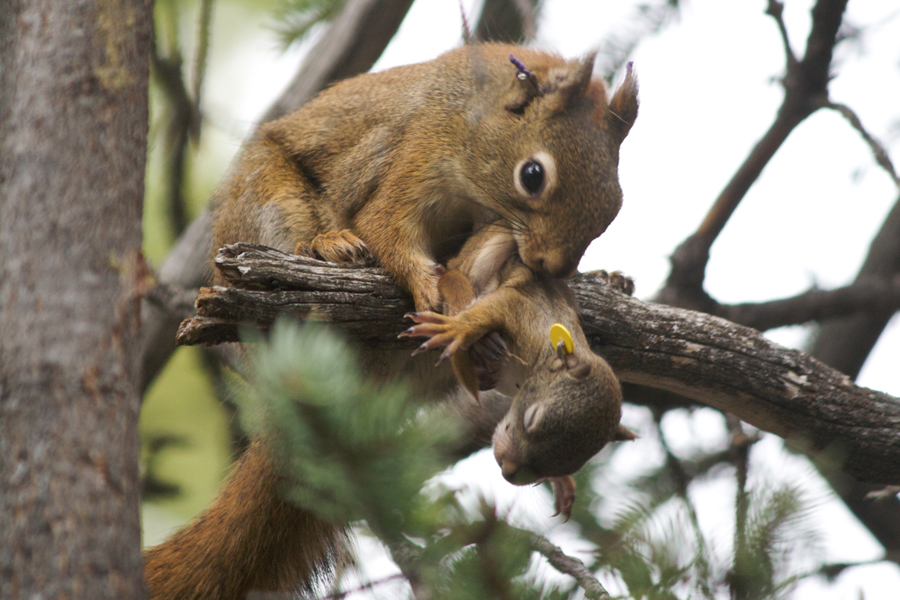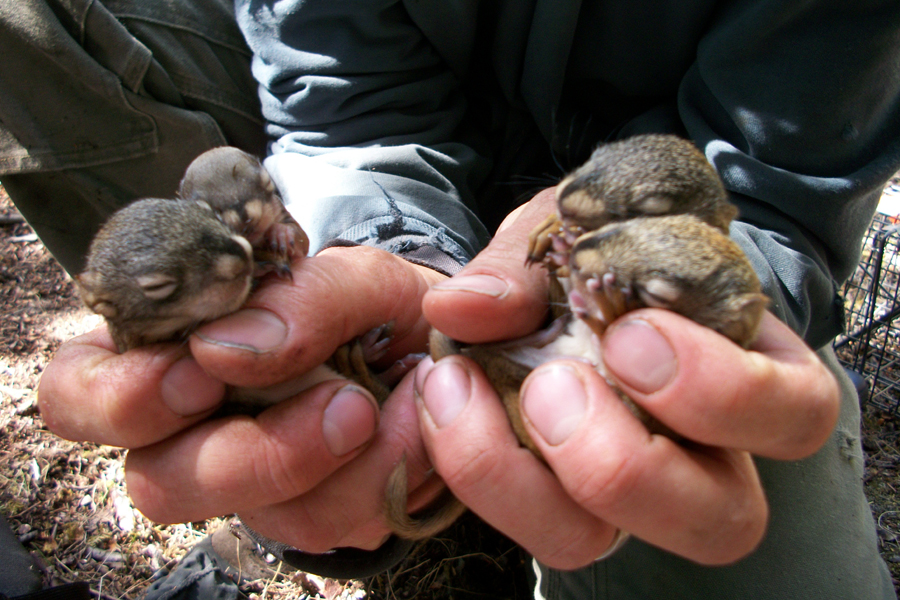
Squirrel Moms' Stress Aids Pup Survival

This Research in Action article was provided to Live Science's Expert Voices: Op-Ed & Insights in partnership with the National Science Foundation.
If jam-packed highways, back-to-back meetings and too little time for "to-do" lists make you tense, consider the red squirrels of the Yukon. Regardless of how much food they have, these mammals experience a significant amount of stress when their numbers increase.
During population booms, this compact mammal, which weighs about as much as a cell phone, breeds earlier in the year and produces smaller-sized litters with pups that grow quickly. But what cues the females to hasten their offspring's growth? To answer this question, Ben Dantzer at the University of Michigan and colleagues with the Kluane Red Squirrel Project hooked up hundreds of speakers in the forest and simulated a burgeoning population by blaring squirrel chatter.
Mothers who gave birth after the simulation produced offspring that grew at a faster rate than those born to females in a control group, even without additional food. This increased growth improved the offspring's survival chances and was driven by higher levels of the stress hormone glucocorticoid. Researchers discovered the latter fact by analyzing the mothers' fecal matter.

Dantzer and his colleagues now want to determine if accelerated growth is due solely to hormonal programming before birth or if maternal behavioral changes after birth play a role. To study this issue, the researchers are developing radio collars with cameras to monitor nesting activities. The devices will provide a rough idea of how much attention mothers give their offspring through nursing and licking, two behaviors that can hasten growth, according to Dantzer. [Stressed Out Mongooses Can't Cope with Baby Booms]

When the collars are operational, the researchers will repeat the loudspeaker experiment and then follow offspring over the course of their lifetimes, which can extend to eight years in the wild. This close-up view will provide an opportunity to learn about the effects of rapid growth on aging.
"Over the last 20 years a major emphasis in biomedicine has been that prenatal stress is bad," says Dantzer. "But there may be some benefit to exposing the offspring of wild animals to stress. By studying species such as red squirrels, we can learn about the unique ways these animals cope with environmental challenges and may figure out solutions to some of the world's health problems related to stress."
Sign up for the Live Science daily newsletter now
Get the world’s most fascinating discoveries delivered straight to your inbox.
Follow all of the Expert Voices issues and debates — and become part of the discussion — on Facebook, Twitter and Google+. See the Research in Action archive. The views expressed are those of the author and do not necessarily reflect the views of the publisher. This version of the article was originally published on Live Science.










